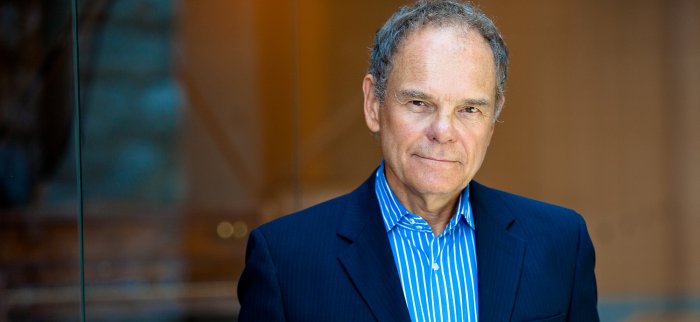The New Brand Power: Mobilizing Global Solution Networks

The following opinion piece was written by Don Tapscott, founder of the Global Solution Networks Program, University of Toronto.
Using an emerging model of problem solving that relies on creating and connecting networks, brands are helping to carve out a new and powerful way to affect global change.
Historically, brands participated in solving global problems through philanthropy or their corporate social responsibility initiatives. Thanks to the Internet and some big changes in the global economy, brands can now leverage the effects of networks to create a dramatically bigger impact than previously thought possible, while at the same time advancing their commercial interests. This is not only good, but also necessary: Over the past decade in particular it has become apparent that business simply can’t succeed in a world that’s failing.
There is something new on the scene describing and informing how brands and the organizations behind them can contribute to movements on a global scale. A “global solution network” is a group of independent parties that have come together to address a world problem they all perceive to be important, but that no single group can handle on its own. They become a network when they begin communicating about and coordinating their activities to make progress, rather than working independently and competitively (as an “industry” in a market economy).
There are “knowledge networks” like Wikipedia, Galaxy Zoo, and TED, and there are “advocacy networks” like Kony 2012, mobilizing tens of millions of people to change policy. Then we have “policy networks” like the International Competition Network determining policy for global institutions and governments. Human Rights Watch and Transparency International are “watchdog networks,” as they perform an oversight role, while networks that govern important resources – like the ecosystem that runs the Internet worldwide – are called “governance networks.” Large global institutions like the World Economic Forum draw on vast networking capabilities from all types.
Cooperative multi-stakeholder efforts to solve shared problems have arisen in the past. (In business, the most apparent examples have been “standards networks.”) Yet historically, the world’s biggest social and economic ills have been predominantly addressed by gatherings of countries. Remarkably, the model we still have and use for global political and economic cooperation was forged in the aftermath of World War II, when 44 countries convened in Bretton Woods, New Hampshire and created the United Nations, International Monetary Fund, World Bank, G8, World Trade Organization, and more.
Once state-based institutions like these took hold, it became hard to imagine that there could be other ways to address territory-spanning social challenges. These are the human problems that, in the words of former UN Secretary-General Kofi Annan, “do not come permanently attached to national passports.”
But over time, it has become clear that these institutions acting alone are unequal to the tasks we set for them at Bretton Woods. Progress on many fronts has stalled.
Two major developments in recent decades have provided the basis for the new model. First, the advent of the Internet has created the means for enterprises of all sizes down to the individual to communicate, contribute resources, and coordinate action. We no longer need government officials to convene in order for the rest of us to align our goals and efforts.
Second, businesses have gained the ability, perhaps by virtue of a newly international consumer base or a growing eagerness to be forces for good, to play an important role in global cooperative efforts. There were no businesses at the table at Bretton Woods. But today, corporations routinely engage with other sectors to address issues in sustainability, social justice, and public well-being.
Consider the process of addressing global climate change by regulating greenhouse gas emissions. We’re in the early days of a new approach that goes beyond national governments and engages all facets of society. At the annual UN Climate Change Conference taking place this fall in Paris, France (COP21), it is hoped that talks will result in a successor agreement to the now-expired Kyoto Protocol.
The conference is particularly unique in that it will convene 750+ participants from across business, government, investors, NGOs, the United Nations, and civil society. The Kyoto Protocol, on the other hand, extended the 1992 UN Framework Convention on Climate Change, committing state parties to reduce greenhouse gas emissions and engaging only states in the process.
Countries remain essential. They’re needed to write and enforce the domestic laws required to give an international agreement teeth. But the overall battle can only be won if businesses, local and regional governments, power providers, transportation systems, other institutions, and billions of citizens get involved. We need to mobilize the resources of humanity on a scale not dissimilar to what we saw during the two great world wars – but this time, we will all be fighting together and for the same cause.
The combination of these developments yields a new model. Global solution networks, as opposed to state-based institutions acting in insolation, can achieve global cooperation, governance, and problem solving – and with faster, stronger progress than non-networked state-based institutions ever could.
As global solution networks proliferate, business is ideally positioned to play an integral role. Once a business commits itself to helping address a global problem, this networked approach can give it both the institutional support it needs and the wide exposure it has earned for being that force for good.
The challenge is clear: You now need to think strategically about which problems you will help solve, and how. Will your organization act in isolation, taking on only the problems it can solve on its own? Or will you join the good and many fights taking place on a global scale, and leave the world meaningfully better?
BIO: Don Tapscott is the founder and chairman of the Global Solution Networks program at the University of Toronto in the Rotman School of Management’s Martin Prosperity Institute. He is the author or co-author of 15 widely read books about technology and new media in business and society, most recently The Digital Economy Anniversary Edition: Rethinking Promise and Peril in the Age of Networked Intelligence.
The opinion piece above was provided to the Budapest Business Journal by The MarkNews.
SUPPORT THE BUDAPEST BUSINESS JOURNAL
Producing journalism that is worthy of the name is a costly business. For 27 years, the publishers, editors and reporters of the Budapest Business Journal have striven to bring you business news that works, information that you can trust, that is factual, accurate and presented without fear or favor.
Newspaper organizations across the globe have struggled to find a business model that allows them to continue to excel, without compromising their ability to perform. Most recently, some have experimented with the idea of involving their most important stakeholders, their readers.
We would like to offer that same opportunity to our readers. We would like to invite you to help us deliver the quality business journalism you require. Hit our Support the BBJ button and you can choose the how much and how often you send us your contributions.




.jpg)


